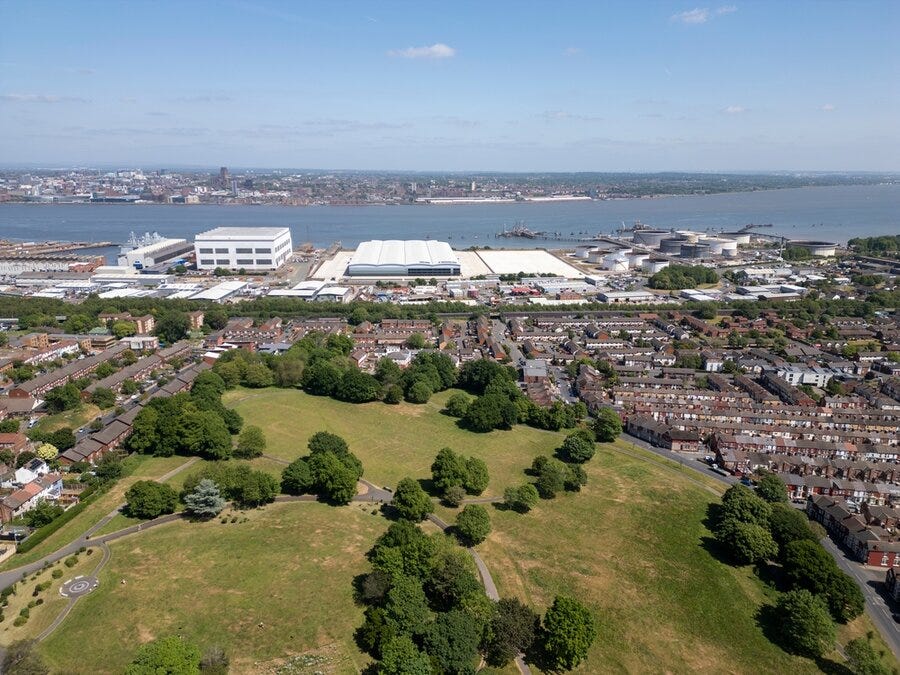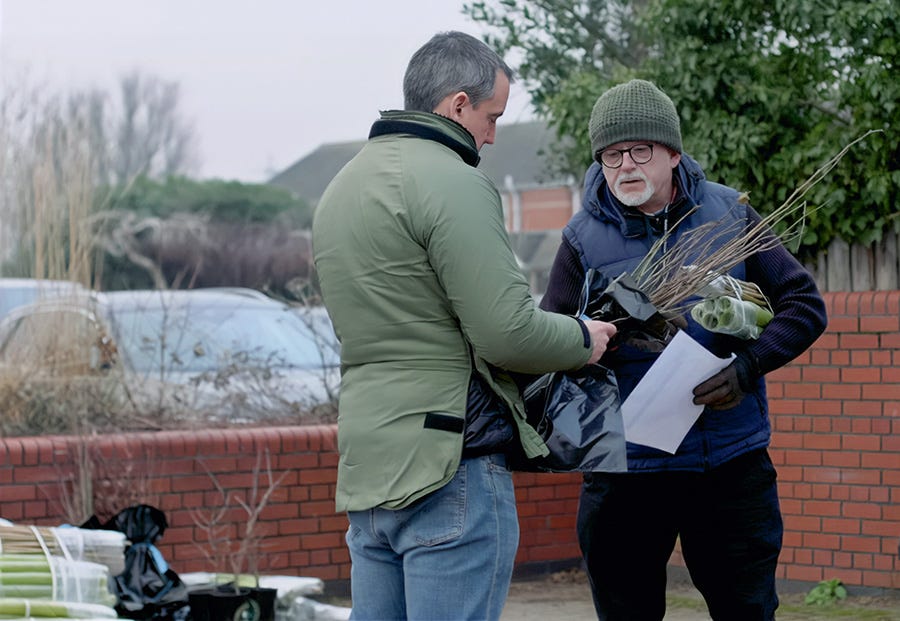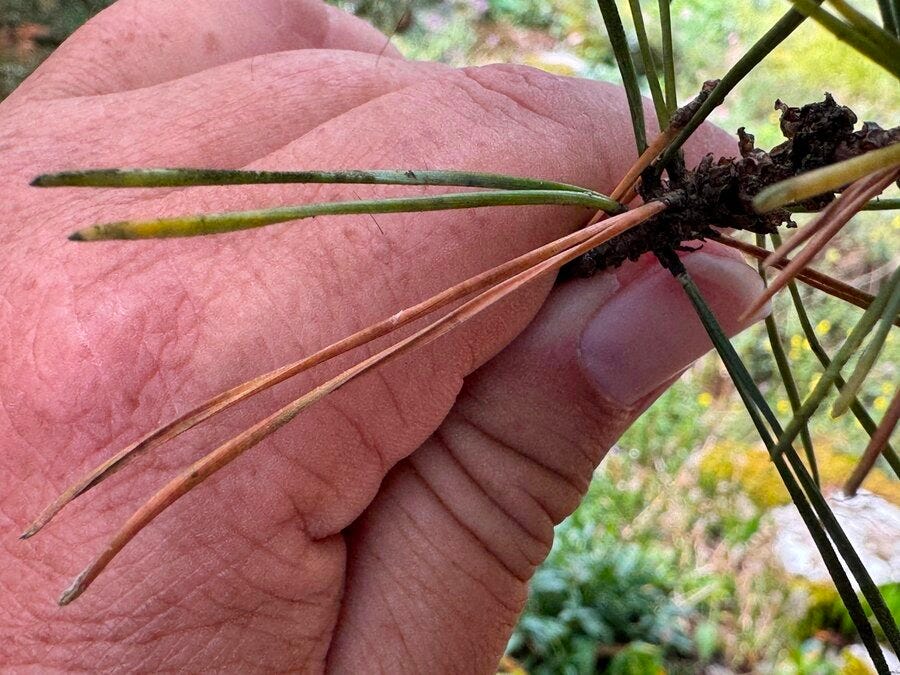Building resilience through Trees Outside Woodland
The Tree Council at AAB’s Creating Canopies 2...
Featuring speakers including Louise Butfoy from Kent County Council, Jackie Shallcross and Charlie Knowles from The Tree Council and Curtis McKnight from Fera.
This week, The Tree Council was pleased to participate in the Association of Applied Biologists’ “Creating Canopies” conference in Carlisle. The 2025 theme, ‘resilience ’, aligns closely with our ongoing work across the diverse landscape of Trees Outside Woodland (TOW).
TOW refers to all non-woodland trees, including those found in car parks, hedgerows, farmland, community green spaces, urban streets, and gardens. Though this term defines trees by what they are not, it captures a vast and heterogeneous treescape that has historically been undervalued in both policy and practice.
At The Tree Council, we believe that true landscape resilience - ecological, social, and economic - requires these trees to be fully recognised, studied, and supported. Trees outside woodland play a crucial role in mitigating climate-induced risks, such as flooding, heatwaves, and biodiversity loss. Our work spans practical interventions, research, and strategic collaboration to unlock the potential of this fragmented but vital treescape.
Understanding the Breadth of Trees Outside Woodland
Our multi-disciplinary ‘Shared Outcomes’ project partnership, funded by Defra, undertook extensive research to better understand and support trees outside woodland. This includes:
Applied economics to assess cost-effectiveness and inform public investment.
Monitoring of tree survival and condition.
Community engagement with landowners, farmers, and local authorities.
Policy input and strategic advice to ensure these trees are included in the national treescape narrative.
To build resilience, we need to move beyond blanket terminology. The TOW landscape includes lone field trees, city trees, community orchards, hedgerow veterans, and trees in amenity spaces, each with unique needs and values. We approach this complexity by asking targeted questions through applied research, experimental planting schemes, and impact assessments.
Seed Sourcing
Greater diversity is usually better for resilience, and this applies to seed sourcing too. So, what can we do to improve our seed diversity situation? It is estimated that 18 nurseries grow over 90% of the saplings used in forest and woodland planting in the UK.
A small proportion of tree seed is imported to the UK, but a greater proportion of young trees are imported, an estimated 128.5 million trees, shrubs and bushes are imported. But that brings with it a risk of importing pests and diseases too. So, what can we do to improve that situation? There are individuals and groups who have been growing and providing trees for decades, but these people are unlikely to be found on various registers and so little has been known about them as a whole until this project. They are called Community Tree Nurseries (CTN), and our project sought to bring their work into the public eye.
Stay tuned for our upcoming Tree Talk revealing exclusive findings from our CTN research.
Practical Action
To test scalable community planting, we partnered with four local authorities in a tree giveaway pilot scheme, distributing over 144,650 trees to more than 1,000 applicants. The scheme offered both free and subsidised trees, and the results were fascinating.
Subsidised trees had a higher one-year survival rate (88%) than free trees (83%).
Demand significantly exceeded supply, one scheme was 400% oversubscribed, with all trees claimed within 48 hours.
Enhancing biodiversity and wildlife was the most common motivation among participants.
These findings highlight that community-driven schemes can deliver both scale and impact, especially when supported by quality stock and post-planting care. Further details on this pilot can be found in a previous edition of Tree Talk, and podcast.
Cost Effectiveness
A longstanding assumption is that TOW schemes are prohibitively expensive. We sought to test this by applying updated economic analysis to real-world planting data.
Our goal: to establish whether TOW schemes are more cost-effective than previously thought. This matters because:
It justifies public investment to support establishment and aftercare.
It enables evidence-led policy and funding models.
It encourages greater public engagement and long-term stewardship.
We also aim to build a public dataset on tree survival rates across different non-woodland settings. Survival data is essential for understanding failures, adjusting planting strategies, and tailoring species selection. However, more long-term data is urgently needed. More on our cost data to come in a future Tree Talk.
Tree Health: pests and diseases
The resilience of trees outside woodland is under increasing threat. Since 2000, the UK has recorded the introduction of a new serious pest or disease affecting native trees every 1.1 years and in addition climate change places additional stress on tree health, making them more susceptible.
Currently, 121 pests of UK tree species have a non-native or unknown origin. Increasing public and practitioner awareness of tree health is now critical. Enhanced monitoring, early detection, and rapid response systems are essential to safeguard our diverse treescape. It’s important to have people on the ground looking out for and more importantly, reporting observations of either poor tree health or specific tree pests and diseases. This is where citizen science, and in particular The Tree Council’s thousands of volunteer Tree Wardens across the UK help to harness our collective knowledge.
Looking Ahead
As our understanding of Trees Outside Woodland deepens, one thing becomes clear: we need more data, more collaboration, and more targeted action.
Whether it’s an urban street tree, a hedgerow oak, or an orchard in a community garden, every tree contributes to the fabric of a resilient, connected treescape.
Now, we invite others, practitioners, researchers, policymakers, and communities, to focus on this vital landscape. By understanding, valuing, and supporting the diverse elements of TOW, we can ensure that these scattered and sometimes forgotten trees are fully integrated into our collective vision for a sustainable future.
Becca Thomas is the Communications Manager for the Trees Outside Woodland project. To find out more, please visit www.treecouncil.org.uk/science-and-research/shared-outcomes-fund/
Find out more about The Tree Council at treecouncil.org.uk. Sign up to our monthly newsletter The Leaflet, and follow our social accounts: Instagram, TikTok, Facebook, LinkedIn, X/Twitter, YouTube.






